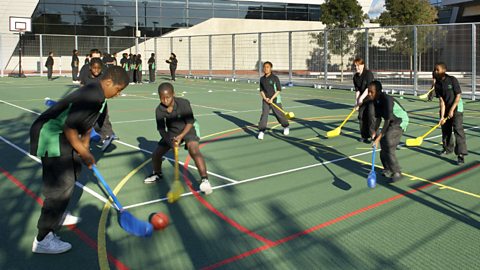Young people and sport
Statistics on the number of young people taking part in sport and physical activity in the UK vary as there is not a single source of data. A general picture shows that young people's participation is high during curriculum time as physical education (PE) is compulsory. It is lower for extracurricular sport and it drops dramatically when young people leave school. Overall, young people's participation decreases from age 13.

There are more young people having a variety of experiences and opportunities within schools and their local community, due to a number of different government strategies. The success of these programmes creates expectations and demands that couldn’t always be met.
To increase young people's enjoyment of and participation in sport and physical activity, providers need to have a flexible approach and work with young people to find the solutions.
Engaging young people in sport and physical activity
Young people who participate in decision-making become more motivated to engage, have ownership over the process and, therefore, gain in self-esteem as well as personal, social and organisational skills.
Read the case studies. What can be learnt from them to increase young people's participation?
Megan
Megan is 15. She disliked PE and regularly 'forgot' her kit so she didn't have to take part. This year the PE teacher took a new approach and asked all of the girls what they liked and disliked about PE and how it could be improved. She acted on the girls' ideas. Now PE lessons are single-sex, there are options – fitness or games, and the girls work towards and are rewarded for personal bests and effort.
Jake
Jake is 14. He enjoys and is good at PE – especially gymnastics and athletics – but didn't attend any extra-curricular clubs or teams. He said he didn't like competitions. His school invited an inline skater to demonstrate and share her experiences and, as a follow up, organised a visit to a taster session. Jake now skates regularly in lessons at the local park and sports centre. He has just taken part in an U16 event.
Farrah
Farrah is 16. She took part in PE but not after school as she couldn't see the benefits for her future. The school set up a sports leadership scheme that focused on employment skills. Leaders gained experience by running activities for children. A friend encouraged Farrah to join so they could work together. Now Farrah volunteers at a local primary school sports club and has included this on her CV and personal statement.
Question
Identify the strategies that would be most effective in helping young people to take part in regular physical activity and sport.
- Give young people a voice
- Consult with them and offer choice
- Make the activities about them and not the provider - eg the PE teacher offers rugby because the pupils play at a high level but the class don't like it
- Positive attitudes – achievement and building of self-esteem
- Inclusion regardless of social group or ability